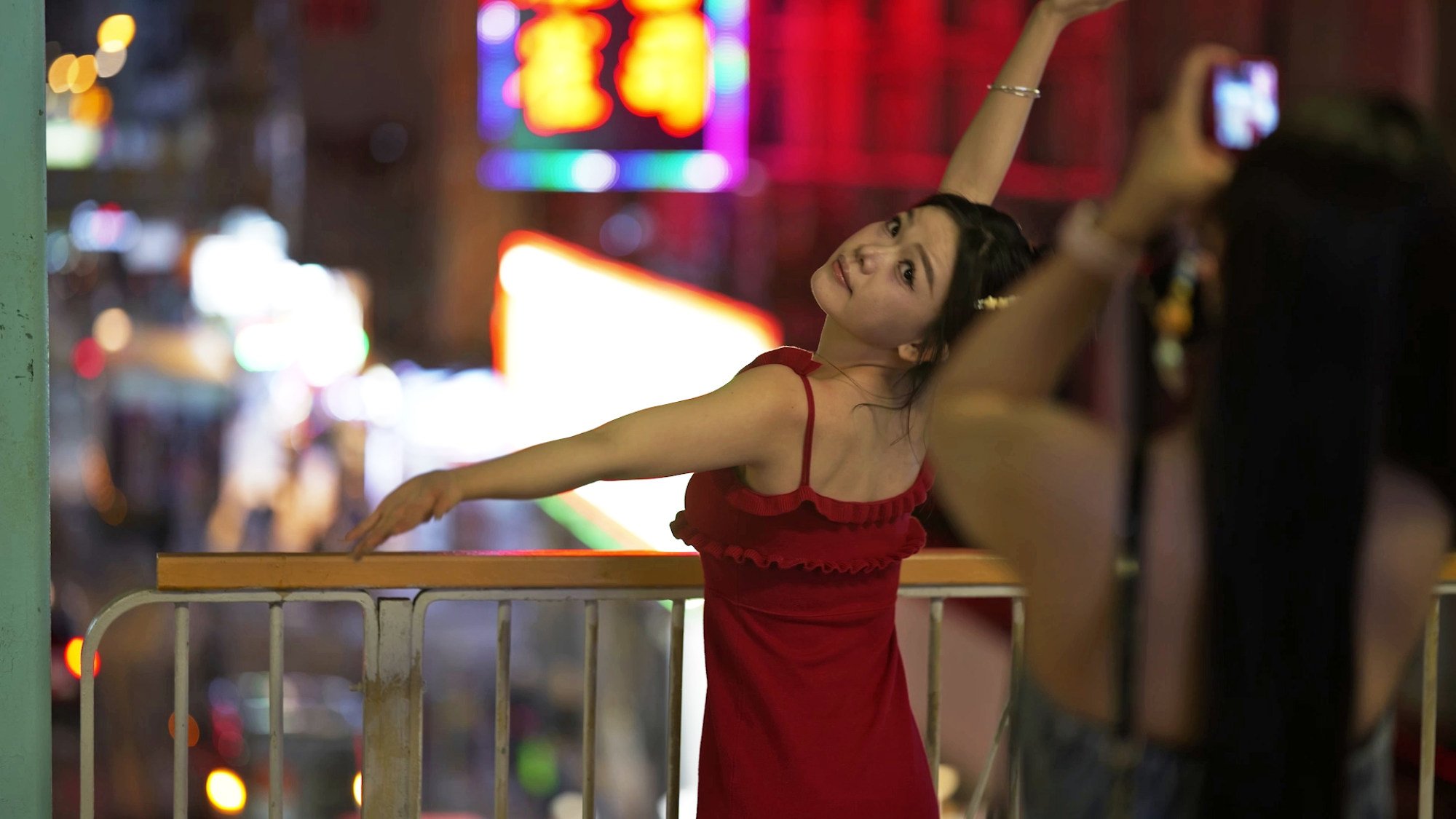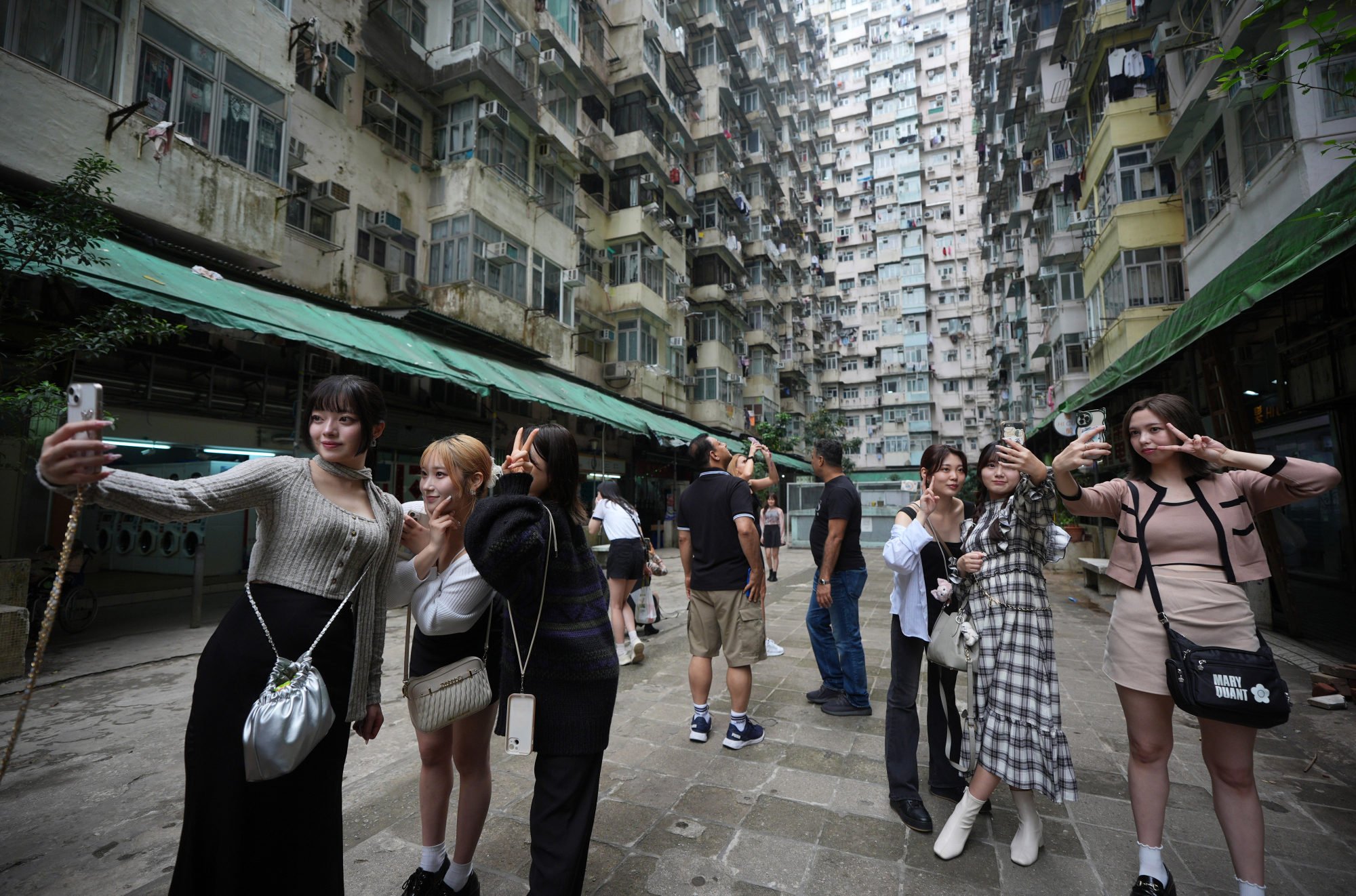It was a tip Wei gleaned on Xiaohongshu, an Instagram-like social media platform popular on the mainland.
“I’d rather experience the culture here. Shopping is not of much interest to me,” said the beauty industry professional from Shenyang, the capital city of the northeastern province of Liaoning.
“Honestly, we have what we want to buy on the mainland, the same products might even be more expensive here and we will have to lug them back.”
The couple, visiting Hong Kong for five days, also found themselves captivated by the district’s decades-old residential buildings.
Guided by “travel strategies” posted on the social media platform, their next destinations included the popular shopping district Causeway Bay. Again, their goal was not to shop but to check out spots where his favourite Hong Kong film series Young and Dangerous was shot.
Xiaohongshu, known for its lifestyle tips and travel recommendations, has more than 200 million monthly active users with the vast majority on the mainland, with more than 70 per cent of the users born in the 1990s.
The influence of the app, which emphasises authentic experiences and community, is not confined to within the country – it has a reach extending to the wider Mandarin-speaking communities elsewhere.
A Malaysian tourist who only gave her name as Apple also lined up with others at the same basketball court, after finding detailed directions on the mobile application on where to take the best selfies.
“The scenery, if added with some background music, seems like quite a romantic place,” she said. “I like taking photos as well as short clips of the landscape and delicacies.
“[Hong Kong] feels familiar because its dramas and films are very popular in Malaysia, and we’d go hunt for places where these were shot.”
Another unorthodox destination popularised on Xiaohongshu is a busy footbridge in Mong Kok, overlooking a terminus of red minibuses. The colourful neon sign adorning the residential buildings is a popular draw for tourists, who want to capture the nostalgic vintage vibe of Hong Kong.

Among those who posed at the site was Zhu Junyu, 22, who came with a group of eight schoolmates from Guangzhou. He said that the group planned to stay in Hong Kong for three to four days, and would spend about 700 to 800 yuan (US$110), excluding hotel costs.
“I like the [cityscape of] densely populated high-rises in Hong Kong punctuated by big street signs. It has a retro feel to it,” Zhu said. “This came from the Hong Kong television we used to watch as children.”
Xiaohongshu has gradually reshaped Hong Kong’s tourism landscape, as influencers share ideas and tips for previously unheralded destinations.
Some brought takeaways from McDonald’s to MacDonnell Road in the Mid-Levels for a fun photo-op, given the Chinese characters of the road name and the fast-food chain are the same.
Others flocked to the Yau Ma Tei Police Station heritage site for a shot of the iconic building facade where many television shows were filmed.
The rise of such experience-based forms of tourism comes as the retail sector suffered a 14.7 per cent drop in April, year on year. The city has been striving to restore visitor numbers to pre-pandemic levels to improve the economy.
Last year, the city welcomed 34 million visitors, which accounted for 55 per cent of the pre-Covid numbers. The mainland remained the largest source of tourists, comprising nearly 80 per cent of the total.
Speaking to the Post, Travel Industry Council executive director Fanny Yeung Shuk-fan said it was clear that tourists were no longer focused on shopping for luxury products in Hong Kong, partly due to the weak economy globally.

She said the latest experience-focused trend was in line with the industry’s push for in-depth, cultural tourism. Xia Baolong, the director of the Hong Kong and Macau Affairs Office, had earlier said that anywhere in the city could serve as a tourist spot.
“Travel [experience] should be the main dish, shopping is the side dish, something they do on the way … If people came here only to shop, it’s not sustainable,” Yeung said. “If you want travellers to come again or stay longer, we must have new places for them to explore.”
Yeung said the council had been working with the food and beverage sectors as well as the retail sector on efforts to boost spending.
Local travel agencies could capitalise on this trend by organising day tours or short trips to offer visitors a deeper understanding of the history and culture of the photogenic sites, she said.
Earlier this year, the council held a competition in designing travel itineraries. Entries included a Cantopop superstar Leslie Cheung-themed city walk, as well as a Cheung Chau overnight tour of the scenic outlying island.
From last year, the Hong Kong Tourism Board has partnered with Xiaohongshu to co-create content promoting the city’s cultural tourism. The partnership has generated more than 10,000 posts about travelling in the city.
In one campaign titled “My Hong Kong record”, 88 influencers were invited to explore the city and share their first-hand experiences and tips. This April, both sides signed a deal to strengthen collaboration.

